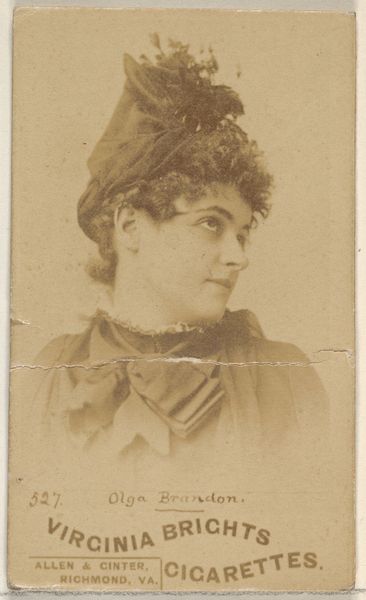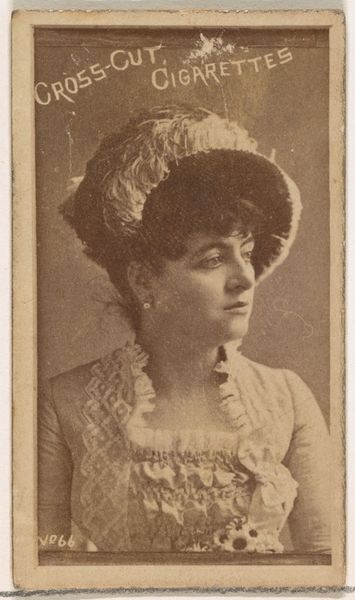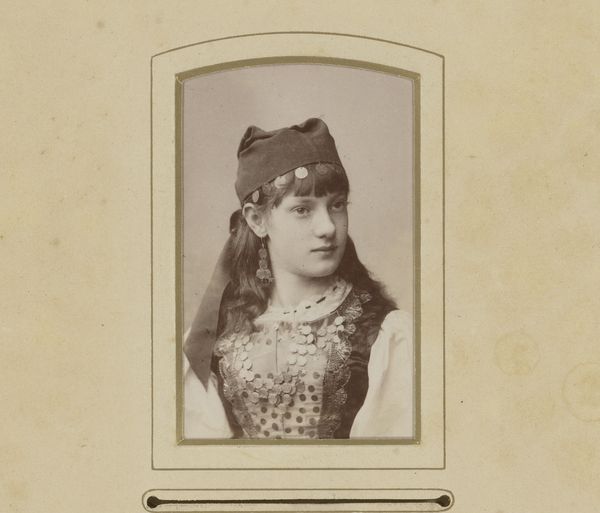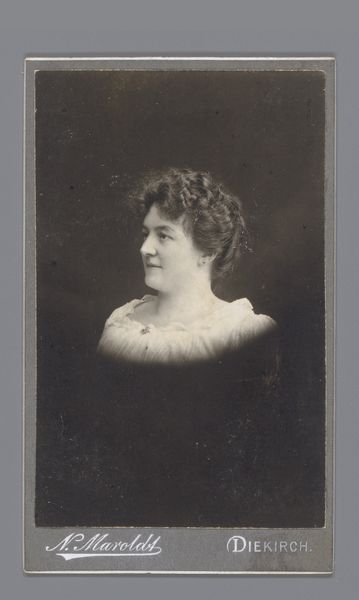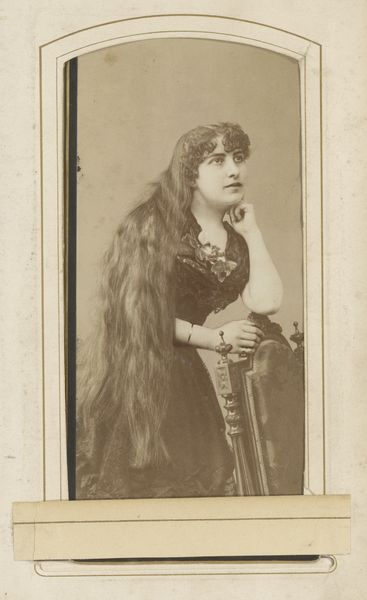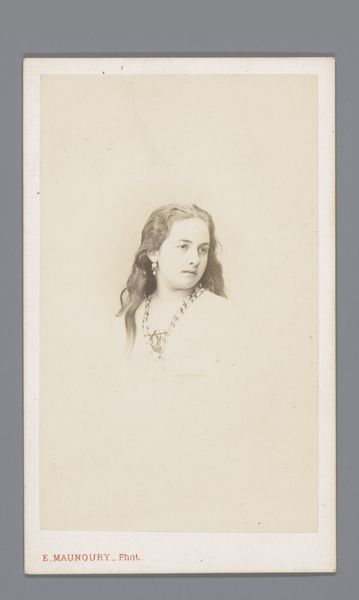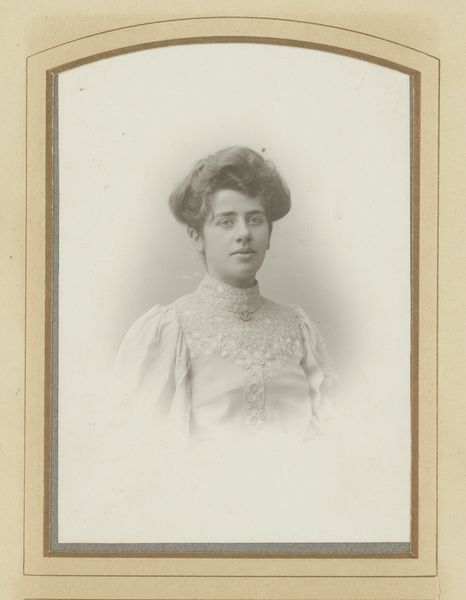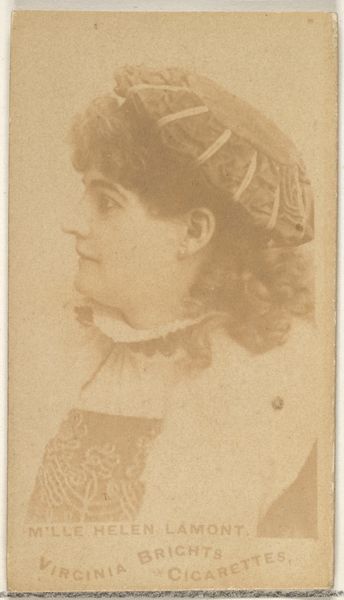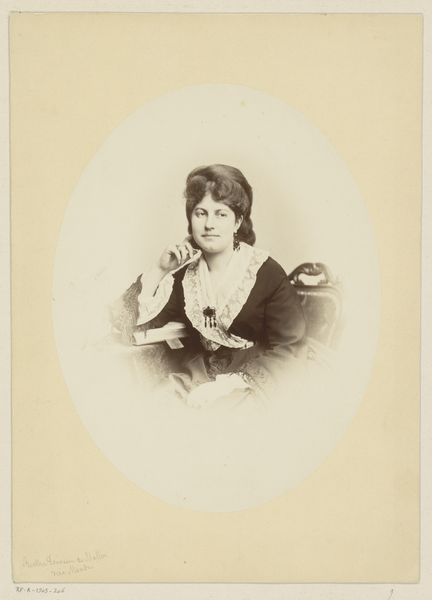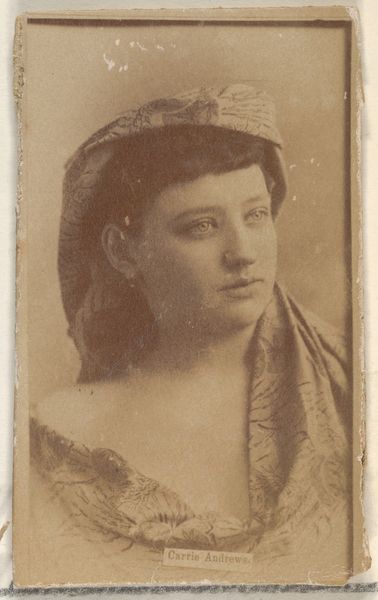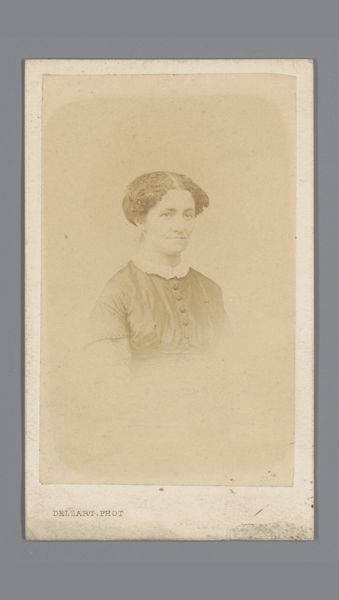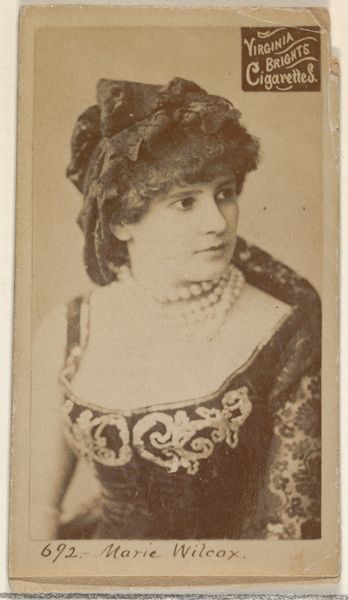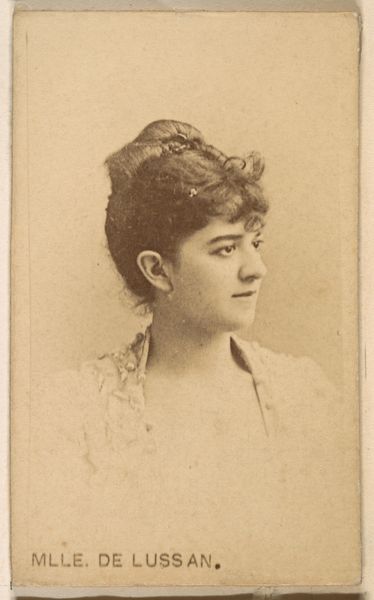
photography, gelatin-silver-print
#
portrait
#
aged paper
#
photography
#
historical fashion
#
orientalism
#
gelatin-silver-print
Dimensions: height 140 mm, width 97 mm, height 240 mm, width 176 mm
Copyright: Rijks Museum: Open Domain
Curator: What a fascinating find. This is a gelatin-silver print titled *Portret van een onbekende Spaanse vrouw*, or Portrait of an Unknown Spanish Woman, believed to have been captured sometime between 1906 and 1930. The photographer is Gustavo Freudenthal. Editor: It's striking, immediately evokes a feeling of somber dignity. The oval frame emphasizes a classic, almost old-world feel. There's a kind of silent storytelling in her eyes. Curator: Indeed. The gelatin-silver print medium, popular during that period, lends itself well to capturing such delicate textures. The lace, in particular, tells us something about the sitter's possible social standing, or perhaps her embrace of a particular visual language. Editor: It's interesting that it's categorized with both "portrait" and "orientalism." How might we interpret that dual categorization in relation to early 20th century societal values? Curator: Exactly. Orientalism as a style romanticized and, often, exoticized cultures from the East, creating a visual vocabulary. This portrait might be participating in that trend, depicting the sitter through the lens of a constructed idea of Spanish womanhood. The lace shawl, or mantilla, while traditional, gains extra weight through the artistic trends of the period. Editor: So the clothing becomes less about the individual, and more about representing a pre-conceived notion? This "unknown woman" stands in for an idea, even an illusion. Curator: Precisely. What appears at first glance to be a simple portrait transforms into an intersection of cultural expectations and photographic representation. Her calm gaze hints at something more complex under the surface, resisting any single narrative we might impose on her. Editor: A beautiful image caught between representation and selfhood, laden with both beauty and cultural encoding. Food for thought. Curator: Agreed. This single image opens up vast avenues for understanding visual identity and the politics inherent in portraiture during this period.
Comments
No comments
Be the first to comment and join the conversation on the ultimate creative platform.

